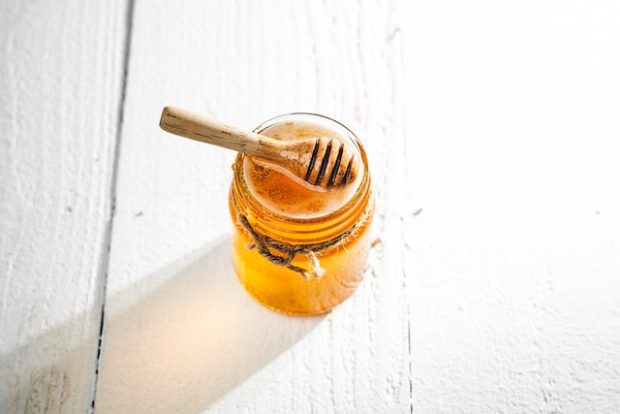Mad honey, also known as “rhododendron honey” or “grayanotoxin honey”, is a unique and potentially dangerous natural substance that has been sought after for its intoxicating properties.
This extraordinary honey is produced by bees that feed on the nectar of certain species of rhododendron and related flowers. It contains a potent neurotoxin called grayanotoxin, which, when consumed in sufficient quantities, can induce a range of psychoactive and medicinal effects.
In this article, we’ll explore the origins of mad honey, its effects on the human body, and where it can be found.
The Origins of Mad Honey
Mad honey has a long history dating back to ancient times. It is primarily found in regions where specific types of rhododendron and azalea plants grow, including parts of the Himalayas, the Black Sea region of Turkey, and certain areas in North America and Europe.
The toxic properties of the nectar produced by these flowers are transferred to the honey during the bees’ pollination process.
In these regions, local beekeepers have been harvesting mad honey for centuries, well aware of its unique properties. However, the high demand for this rare honey has also led to illegal harvesting and black-market trade.
Effects on the Human Body
People buy mad honey for its two primary effects: intoxication and potential medicinal properties. When ingested, the grayanotoxin in the honey affects the body by disrupting sodium channels in nerve cells. This results in a series of symptoms, which may include:
-
- Lightheadedness: Mad honey consumption often causes dizziness and a feeling of floating, which can be quite enjoyable for some.
- Nausea: Nausea and vomiting are common side effects, which can be less pleasant.
- Hallucinations: In higher doses, mad honey can induce vivid hallucinations, making it a sought-after substance for those seeking a natural high.
- Relaxation: Some people report a sense of relaxation and stress relief after consuming small quantities.
- Potentially life-threatening effects: In extreme cases, mad honey can lead to heart arrhythmias, low blood pressure, and even death. Therefore, it must be consumed with caution.
In some cultures, mad honey has also been used medicinally. It is believed to have properties that can treat ailments such as hypertension, diabetes, and sexual dysfunction.
However, these medicinal claims lack scientific validation and should be approached with skepticism.
Where to Find Mad Honey
Finding mad honey is not as simple as visiting a local supermarket or apiary. This unique honey is primarily available in the regions where the rhododendron and azalea plants grow, including:
-
- Nepal: The Himalayan region of Nepal is renowned for its production of mad honey. Local beekeepers collect honey from hives situated on cliffs and steep slopes.
- Turkey: In the Black Sea region of Turkey, especially around the Rize province, you can find mad honey produced by bees that forage on the nectar of rhododendron and azalea flowers.
- North America and Europe: While mad honey is less common in these regions, it can still be found in certain areas with the right botanical conditions. In the United States, for instance, the Pacific Northwest has pockets where these plants grow.
If you’re considering trying mad honey, it’s essential to exercise caution. The potency of grayanotoxin can vary, and its effects can be unpredictable.
Moreover, consuming large quantities can be hazardous to your health. If you’re interested in experiencing the effects of mad honey, it’s advisable to do so under the guidance of someone knowledgeable about its use and potential risks.
Mad honey is a fascinating and elusive natural substance that has captivated the curiosity of people for centuries. It offers a unique blend of intoxication and medicinal potential, but it should be approached with caution due to its potentially dangerous side effects.
If you’re intrigued by the idea of trying mad honey, consider traveling to one of the regions where it is produced, and always prioritize your safety and well-being when experimenting with this unusual honey.
Read More:


